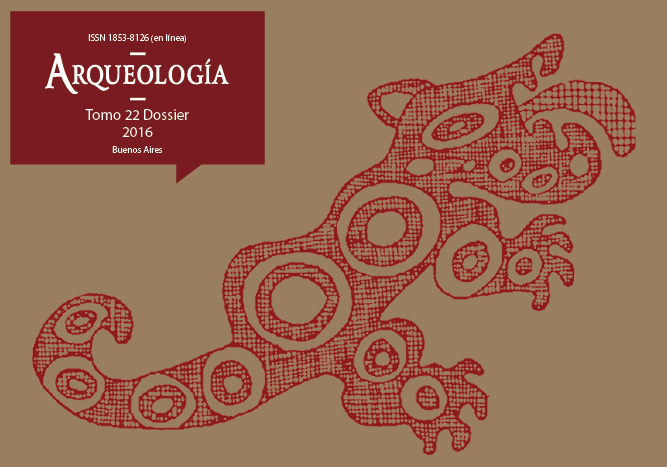Wild camelid consumption by local comunities in Quebrada de Humahuaca, Jujuy, Argentina
Keywords:
Wild camelids, Human consumption, Quebrada de Humahuaca, Subsistence strategies, Resource circuit
Abstract
Since archeo-faunal studies begun at Quebrada de Humahuaca, one of the main concerns has been assessing the role wild animals had in the Prehispanic human diet. Although there were a number of wild species represented in each of the analyzed contexts, the main focus of this article is on camelids, given that they were present in higher proportions across all the samples. With the aim of outlining consumption models, some researchers have proposed that during the earlier, Formative Period exploitation of wild camelids was more important than during later phases, or during the Inka occupation of the region. Nevertheless recently new studies, on a greater number of samples are challenging this supposed decline in the consumption of wild resources, emphasizing that consumption of wild resources seems to have varied depending on the temporal, site and locational context. A study of a faunal collection from the Quebrada de Humahuaca, combined with the bone sample results of a skeletal remains analysis from the Los Amarillos site comprehends an occupation range of more than five hundred years (1000-1536 dC). Together, these assemblages permit us to challenge the gradual diminishing of wild camelid consumption through time.Downloads
Download data is not yet available.
How to Cite
Mercolli, P. H. (1). Wild camelid consumption by local comunities in Quebrada de Humahuaca, Jujuy, Argentina. Arqueología, 22(3), 37-55. https://doi.org/10.34096/arqueologia.t22.n0.3276
Section
Articles
Authors who publish in this journal agree to the following conditions:
- Authors retain copyright and yield to the journal right of first publication with the work registered with attribution license Creative Commons, which allows third parties to use the published always mentioning the authorship of the work and first publication in this magazine.
- Authors can make other independent and additional contractual arrangements for the non-exclusive distribution of the version of the article published in this issue (p. Eg., Inclusion in an institutional repository or publish it in a book), provided that clearly indicate that the work was published for the first time in this magazine.
- It allows and encourages the author / s to publish their work online (eg institutional or personal pages) before and during the process of revision and publication, as it can lead to productive exchanges and greater and more rapid dissemination of work published (See The Effect of Open Access).





(1)13.png)






1.jpg)
1.jpg)


13.png)
1.png)


(1)1.png)









